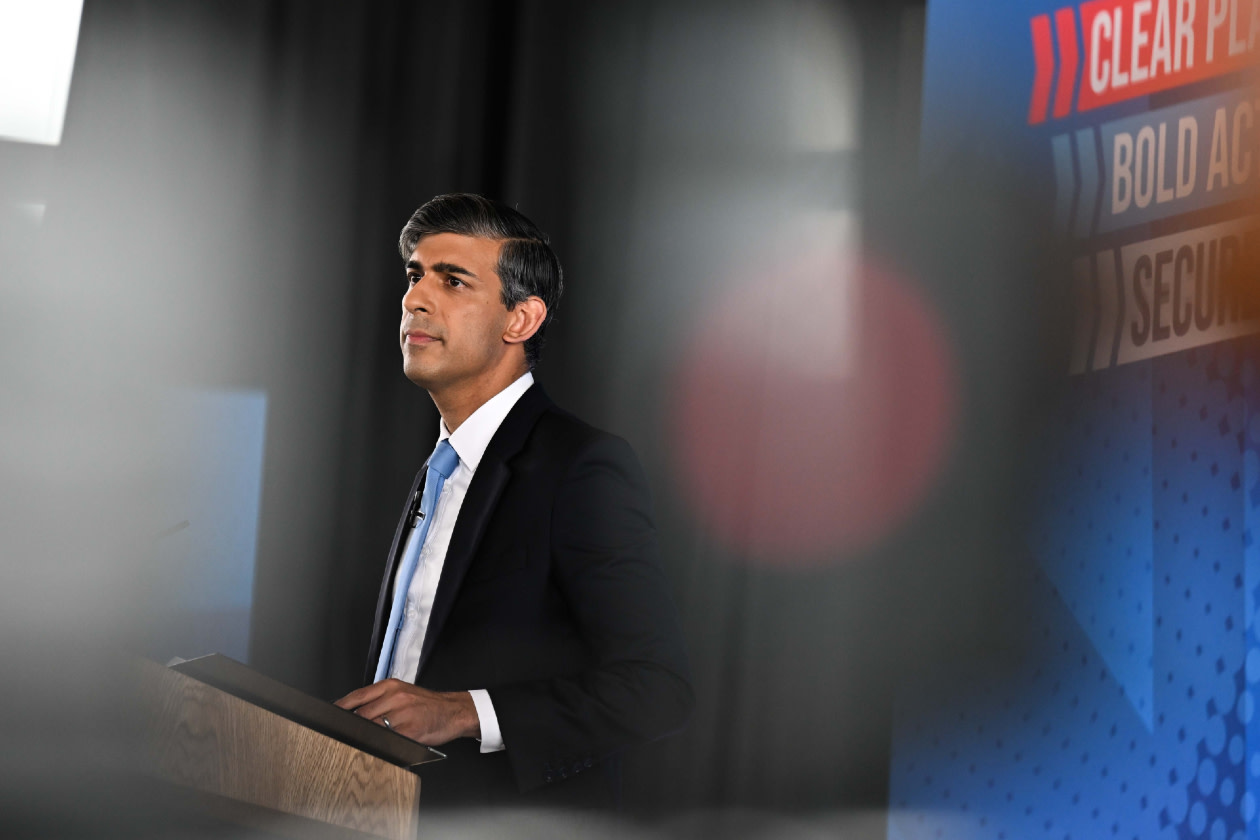The 80 pages of the Conservative election manifesto are here, and while there was not much unexpected policy-wise, the document and Rishi Sunak’s launch speech did provide some clues as to the party’s strategy and direction. Here are some key points.
Tax cuts, again
The overriding theme of the manifesto and the launch – and, indeed, of the whole Tory campaign – has been an attempt to contrast promised tax cuts with the idea, however contested, of Labour tax rises.
The manifesto thus produced the mini-surprise of a pledge to abolish national insurance contributions (NICs) for self-employed people, plus the briefed-out plan to cut 2p more from NICs for employed workers, and the slightly vaguer promise to eventually phase out NICs “when it is affordable to do so”.
While there were other pre-billed cuts, for example to stamp duty and a higher threshold for child benefits, there was nothing on inheritance tax, as sought by some Tory MPs.
No rabbit, no hat
While one Tory spinner made the reasonable point that the purpose of a manifesto is not simply to surprise journalists, many of Sunak’s MPs might have been hoping for something bold, something that could grab attention, or even better shift the polling dial.
Whether or not that was a realistic hope, the only half-surprises came with NICs, plus a few details such as the expanded housing target of 1.6m new homes being built in the next parliament, and a revised version of the help to buy scheme.
Many of the main policy offerings, however, had been well trailed in advance, for example the pledge to boost defence spending to 2.5% of GDP, the plan for a new form of national service for young people and a statutory cap on migration numbers.
One absence was any new policy, or even new language, on the UK potentially leaving the European convention on human rights, another ask from rightwing Tories.
A populist blueprint
Some rightwing Tories might view the manifesto as cautious and limp, but the signs of Sunak and his ministers trying to head off the threat from Nigel Farage and Reform UK are obvious throughout the document.
The bulk of the section on net zero is aimed at watering down or caveating green plans, with a pledge to impose no new environmental levies or a frequent flyer tax. Another part of the manifesto promises to clamp down even harder on protests.
There is also a long section outlining the party’s proposals on gender identity, which at just over 400 words is four times as long as the entire section on social care. The term “poverty” gets only one mention, in relation to international aid.
Policy re-treads
When it came to pending legislation, the Conservatives appeared as surprised as anyone that they had just called an election, and several policies personally linked to Sunak failed to make it, including a gradual ban on tobacco and a crackdown on vape sales, plus making maths study mandatory to 18.
Other fallen bills would be resurrected, such as the long-delayed plan to ban no-fault evictions from residential properties, and reform of the leasehold system.
Those return in the manifesto, as does, obviously, the Rwanda deportation plan, with a promise to begin a “regular rhythm of flights every month, starting this July” – even if Sunak declined to say how many asylum seekers would be deported.
But not everything makes it
One long-held Tory idea that has not been revived is the ban on so-called conversion therapies. While saying they are “abhorrent”, the manifesto adds: “But legislation around conversion practices is a very complex issue, with existing criminal law already offering robust protections.”
This article was written by Peter Walker Senior political correspondent from The Guardian and was legally licensed through the DiveMarketplace by Industry Dive. Please direct all licensing questions to legal@industrydive.com.
Photo by Rasid Necati Aslim/Anadolu via Getty Images

